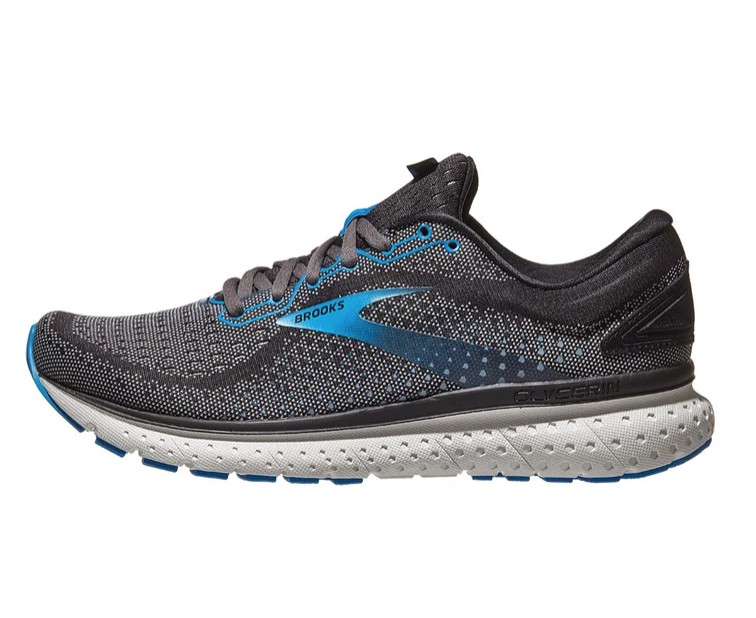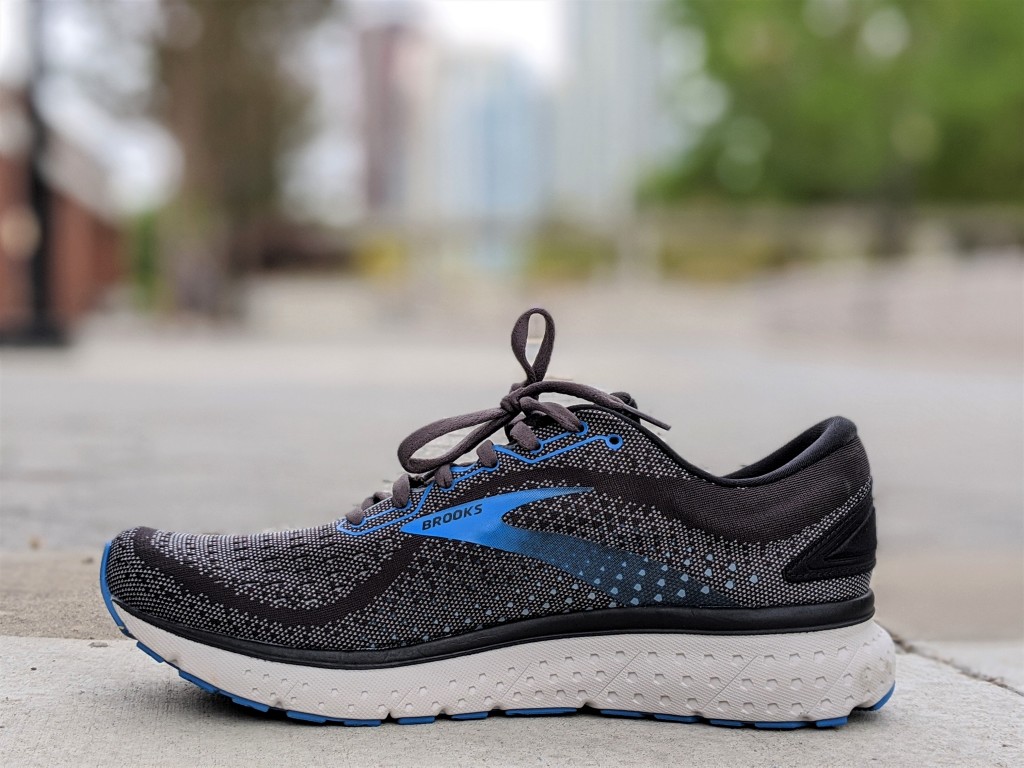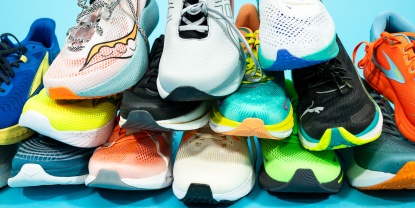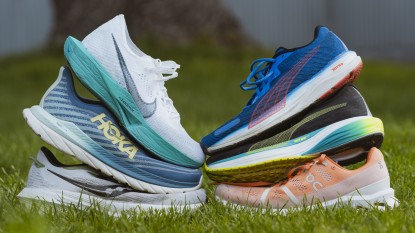Brooks Glycerin 18 Review
Our Verdict
Our Analysis and Test Results
We took the Glycerin 18 out in both chilly and hot weather across all sorts of terrain — hills, flats, city, trails, grass, and everything in between, and it comes out on top as our favorite model for stability.
Responsiveness
A lot of fans of the Glycerin line have been incredibly loyal over the years because the model provides such dependable comfort. For sure, the Glycerin 18 is comfortable, but they've balanced some of that comfort with better responsiveness and stiffness. That's why we took them out of the comfort model contention and put them in the stability model race, where they ended up with our Top Pick for Stability Award.
While the earlier version of this shoe was more of a comfort model, this one is stiffer and more responsive without losing too much in padding, making them ideal for a top stability model. The DNA LOFT midsole is actually fairly stiff. It has good compression and shock absorption when you land, but it returns much of that energy. Even just compressing the heel with your fingers, you can feel that it's a good deal firmer than most comfort models.
But it's not all midsole. The snug upper has various rigid structures embedded throughout that serve to increase its stiffness and responsiveness. Brooks tends to do a good job with its heel cups. They're deeper with a wide lip of padding that perfectly hugs the heel to reduce or eliminate slippage, which means better shoe adherence, which means better response, which means a faster, stabler ride.
Landing Comfort
The first thing you'll notice about the Glycerin 18 is that they seem to have two layers of cushioning. That's the insole you're feeling. The insole goes a long way to cushioning the landing, so custom inserts might change the feel a bit.
The DNA LOFT midsole is fairly dense and might even feel stiff to some runners, though it still has a lot of compression in the heel. The transition zone from the heel to toe also helps with dampening the landing while propelling you forward at toe-off. You'll be pleased that your strides don't get eaten up in cushion, but neither do your bones crack every time you land.
Weight
The Glycerin 18 is ever so slightly lighter than their predecessor at 23.0 ounces in a pair of men's 11 (we got 23.2 ounces for the Glycerin 17). You'd never notice that difference, and it's difficult to say where exactly that weight savings is coming from. Almost all of the substantive parts of the shoe remain unchanged.
Just as with the 17, there's still tons of thick padding throughout the collar and tongue. The upper got an update, but it's still a similar double jacquard mesh. The biggest difference here is that the midsole and outsole ratio was altered a bit so that there's more cushion from the DNA LOFT midsole and a bit less rubber in the outsole.
Durability
The Glycerin 18 does better than average in durability. The updated stretch double-jacquard mesh improves the shoe's flexibility, which reduces the stress placed on more rigid portions of the upper, limiting the potential for tears and other degradations.
One of the useful things you'll find in these more fortified stability models is increased internal girding, and that's true of the 18. At the toe, you'll find a hard structure that helps protect your toes from serious stubs and protects your upper from stabs and tears. In fact, much of the upper has some sort of inner structure that could confer some degree of protection against abrasion and tearing, but the lean jacquard mesh, like all running shoe mesh, is still vulnerable to tears.
The outsole is also a point of note for durability. The outsole on the Glycerin 18 has a slightly reduced thickness compared to earlier versions. The idea is to improve landing comfort without sacrificing protection. At the end of the day, reduced outsole thickness means you'll eat through to the midsole sooner, but in practice, most of us probably won't get to that point before we're ready for new kicks. Plus, Brooks has a fortified HPR Plus rubber at the heel where most of us tend to eat up the sole the hardest. There's still a durably blown rubber under the forefoot, which will also help in the longevity.
Upper Comfort
It's not just consistent performance across measures that earn the Glycerin 18 our Top Pick for Stability Award. It's the combination of great comfort with the underlying responsiveness and stability. No one wants to run in a pair of flat block shoes, though they'd be pretty stable and make sure you came back to a neutral position.
No, with the Glycerin 18, you'll be treated to an open toe box and roomy upper with a snug heel, so you don't lose the responsiveness, but your feet don't feel strangled. You'll get the signature Brooks padding throughout the collar and tongue that envelops your heel, ankle, and top of the foot in pillowy goodness. The rest of the upper features a silky smooth OrthoLite sockliner that pads and reduces friction. Together with the flexible double jacquard upper, they make even the sparsely padded toes feel pampered.
Breathability
These kicks are still reasonably considered comfort models despite their new mix. That means they have lots of thick padding around the heel, collar, and tongue, as well as a nice Ortholite sockliner lining the upper. That translates into lower breathability and greater moisture retention. This is especially true at the toe and heel where rigid, impermeable plastic structures are embedded to improve stability and protection — heat and sweat (or water) won't be passing out of the shoe in those spots.
They're not the worst for breathability, of course. That honor goes to shoes long-since dropped from our review. Their updated stretch double-jacquard mesh has pretty good breathability over the top of the toes and along the sides of the foot where your veins are most exposed and best able to kick out heat. You'll probably struggle to find breathable shoes in the stability and comfort arenas as most tend to be heavier, contain internal stability structures, and have lots of padding. In that light, the Glycerin 18 isn't the worst shoe out there for this measure.
Value
This can be a difficult measure to assess for what's essentially a hybrid model. The Glycerin line has long been a comfort shoe, and its value was typically spot-on. Fans of the line might not agree with its price for this current model because it's more of a hybrid, moving toward greater stability and responsiveness. We understand if there's dissent here from longtime fans — we'd disagree on the value if we were looking for a pure comfort model too. That said, the Glycerin 18 mixes in a good deal of speedy responsiveness without sacrificing too much in the way of comfort, making them ideal for harder training among runners looking for a little more shock absorption. The price for that ask is closer to their MSRP. Of course, we wouldn't mind if the price came down a bit…
Conclusion
The Glycerin 18 is among the best running shoes out there today. While they're a great choice for just about anyone, we feel they're ideally suited to runners who want a little help keeping their gait straight and absorbing a little more shock from the heel. It's a speedy shoe that will do just that with its super thick DNA LOFT midsole and internal stability structures. The primary reason we're so stoked about them is that they excel at the stability task, but sacrifice very little in the way of speed. That's largely from the dual responsiveness of the midsole as well as the overall snug design of the upper. It adheres to the foot exceptionally well, so there's very little lost energy despite its supple build. It is for these reasons that we're happy to give them our Top Pick for Stability Award. We quite enjoyed them, and we're confident runners looking for speedy stability shoes will enjoy them too.













